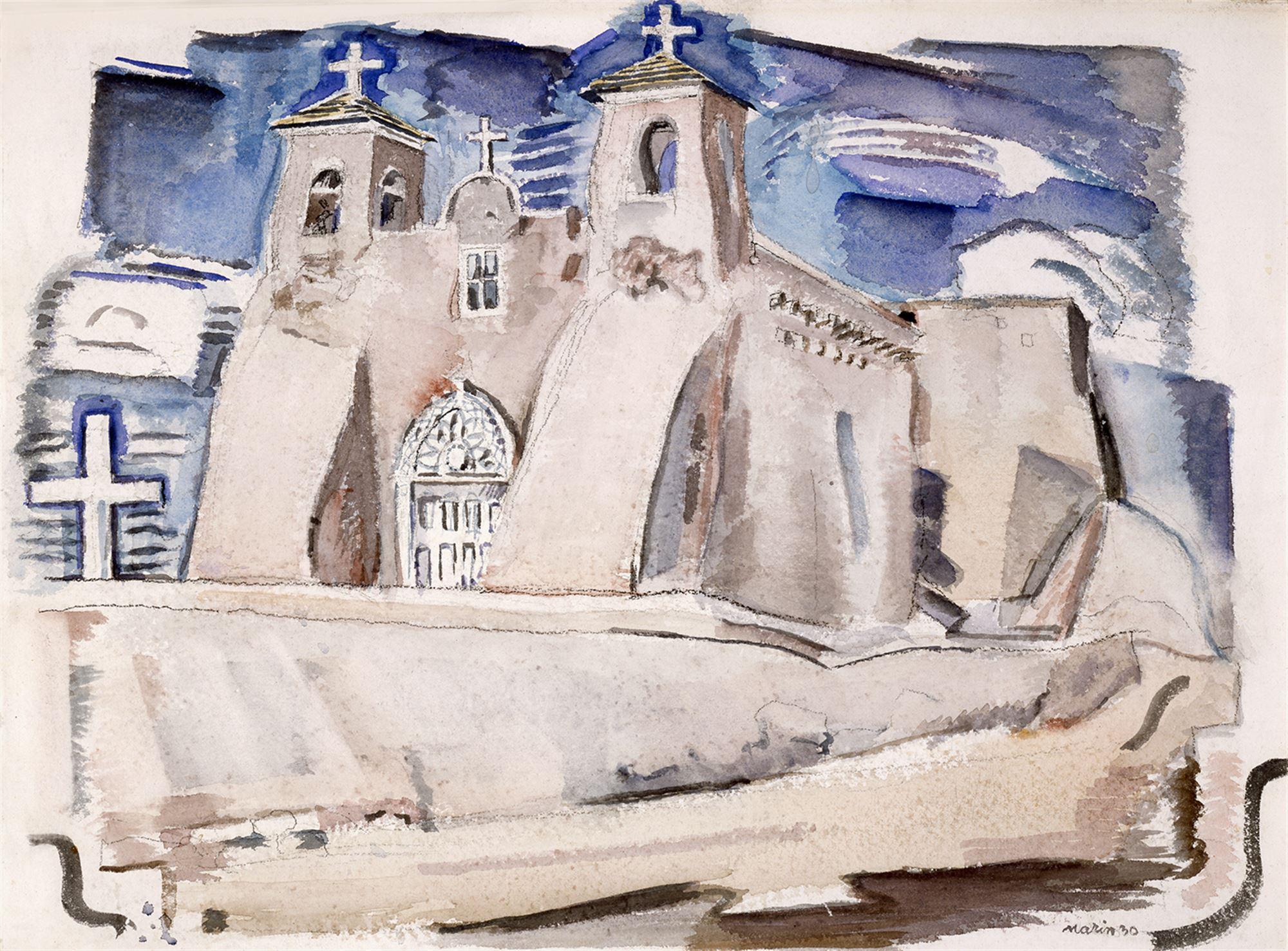John Marin was born in New Jersey in 1870, where as a teenager he began painting scenes of the local landscape in a quasi–Impressionist style. He studied under Thomas Anshutz at the Pennsylvania Academy of the Fine Arts from 1899 until 1901 before traveling to Paris in 1905, where he helped found the New Society of American Artists with Alfred Maurer and Max Weber in 1908. Later that year, he met Edward Steichen, who sent a sample of his watercolors to Alfred Stieglitz in New York. Stieglitz quickly became one of the artist’s greatest supporters and gave him his first solo exhibition at 291 in 1910.
When Marin returned from Europe in 1911, he was a recognized member of the 291 elite. In 1914 he began summering in Maine, where he developed abstract shorthand based on the exaggeration of certain elements and the incorporation of Cubist principles. Stieglitz continued his fervent support of Marin throughout the 1920s, arranging for him to show at the Daniel, Montross, and Ardsley Galleries following the close of 291 in 1917, and opening his Intimate Gallery in 1925 with an exhibition of his recent work.
Although Marin had enjoyed critical attention since his debut at 291, widespread recognition did not come until 1936, when he received a retrospective at the Museum of Modern Art. In 1948, the same year he was named the number one painter in America by Look magazine, Clement Greenberg wrote, “If it is not beyond all doubt that Marin is the best painter alive in America at this moment, he assuredly has to be taken into consideration when we ask who is.” Two years later, Edith Halpert established the John Marin Room at her Downtown Gallery, so his work would be constantly on public display. One of the few members of the Stieglitz circle who enjoyed continued success and was willing to absorb new trends throughout his life, Marin was both hugely popular and influential. He died in his beloved Maine in 1953.





